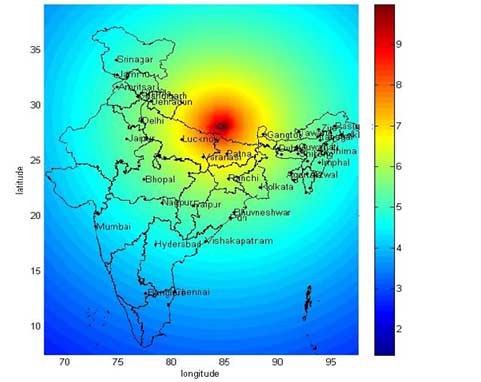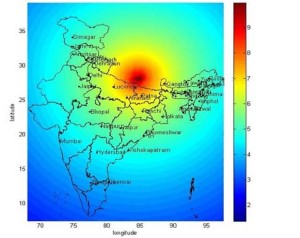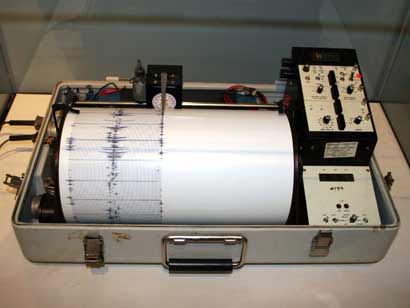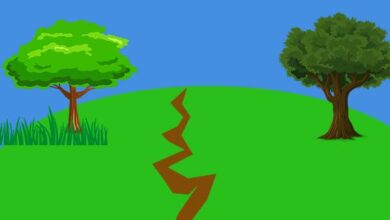Nepal Earthquake big, but not the BIG ONE fear scientists

The devastating earthquake that originated in Nepal on Saturday may have been the strongest to hit the central Himalayan region in the last 80 years, but scientists say this was not the big one that they had been fearing would strike the area.
Details of Earthquake that Occured yesterday with Its Epicenter in Nepal
An Earthquake of magnitude 7.9 occurred yesterday at 11.41 A.M IST (Indian Standard Time) at a depth of 10 Km with its Epicentral Region located in Nepal about 80 Km NW of Kathmandu. Its Latitude and Longitude are 28.1 N and 84.6 E respectively.
Effects of this earthquake were severely felt in all northern and central parts of India including in the capital city of New Dellhi. A broad graphical representation of the earthquake showing the magnitude in varying colours as on the right of the graphic is as below
A report by the Seismic Division of the Indian Meteorological Department says major damage is expected in and around the epicentral region. The source region is expected to experience an intensity of IX and above at Modified Mercalli scale(MMI) , which corresponds to considerable damage even in specially designed structures . 14 aftershocks were also reported of much less magnitude till last reports came in as shown below:
SN Time in IST Latitude Longitude Depth in Kms Mag
| SN | Time in IST | Latitude | Longitude | Depth in Kms | Mag |
| 1. | 12:08 | 28.0 | 85.7 | 10 | 5.5 |
| 2 | 12:15 | 28.1 | 84.8 | 10 | 6.6 |
| 3 | 12:26 | 28.0 | 85.7 | 10 | 5.7 |
| 4 | 12:38 | 27.8 | 85.6 | 10 | 5.0 |
| 5 | 13:17 | 27.9 | 85.5 | 10 | 5.0 |
| 6 | 13:36 | 27.6 | 85.7 | 5 | 4.9 |
| 7 | 13:47 | 27.8 | 85.7 | 10 | 5.0 |
| 8 | 13:51 | 27.6 | 84.9 | 10 | 5.6 |
| 9 | 13:59 | 28.1 | 84.8 | 20 | 5.0 |
| 10 | 14:19 | 27.9 | 85.0 | 10 | 4.4 |
| 11 | 14:26 | 27.3 | 85.1 | 10 | 5.7 |
| 12 | 14:47 | 28.3 | 87.3 | 5 | 5.8 |
| 13 | 15:01 | 27.6 | 85.3 | 10 | 5.6 |
| 14 | 16:11 | 27.7 | 85.8 | 5 | 5 |
Saturday’s earthquake was second only to the 8.3-magnitude earthquake that had struck the Bihar-Nepal region on January 15, 1934. The eastern end of the Himalayan region, on the Arunachal Pradesh-China border, had been hit by a 8.5-magnitude earthquake on August 15, 1950.
“We know there is a huge amount of accumulated strain in this area. It is due for a major earthquake, perhaps a series of earthquakes, bigger than 8 on the Richter scale. That is the kind of energy that is estimated to be accumulated there. This was certainly not one of those earthquakes that is probably imminent. In terms of energy release, I would say this would not have released even four or five per cent of the energy that is estimated to be stored there,” said Harsh K Gupta, former director of the Hyderabad-based National Geophysical Research Institute and a former member of the National Disaster Management Authority.
Ajay Paul of the Dehradun-based Wadia Institute of Himalayan Geology said it was all about incorporating earthquake-resistant methods in urban planning.
“The lesson, once again from this earthquake, is that we need to adapt and plan and prepare ourselves for these earthquakes. More than 90 per cent of the destruction that is caused by the earthquakes is avoidable if we plan for it. An earthquake of magnitude 7.5 is routine in Japan but no one dies there, no property is damaged. We can also do it. There is no knowledge gap. We know exactly how to do it. The buildings have to be constructed in a certain fashion, habitations have be settled in a particular manner. All this is very well known,” he said.










